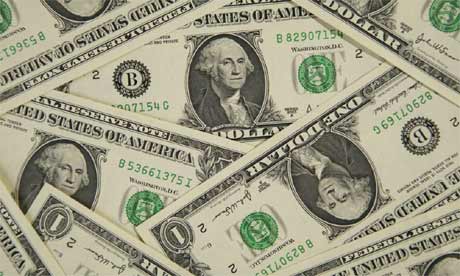- guardian.co.uk, Monday 17 August 2009 17.34 BST
- Article history
It's an image much beloved of Hollywood directors: the head lowered over a mirror, a crisp greenback tightly rolled and inserted in a nostril, then applied at the other end to a line of white powder.

Photograph: Getty/Piet Mall
Researchers from the American Chemical Society in Washington have discovered that the practice of consuming cocaine through rolled up paper money is far more than just a cinematic cliché. They found that in big cities in the US, up to 90% of the notes tested positive for traces of the drug.
In Washington itself, the percentage of notes with cocaine residue reached 93%, a prevalence almost matched by other urban areas such as Boston, Detroit and Baltimore.
Though some of the contamination can be blamed on cocaine crystals being rubbed from one note onto others in bundles of currency, the researchers did find an apparent growth in the phenomenon. Similar tests conducted two years ago found that only 67% of US banknotes had cocaine traces.
The study put that growth down to a probably increase in cocaine consumption in America, where there are thought to be as many as 6 million regular users of the drug.
For the first time, the researchers compared the results with tests on banknotes from other parts of the world. After the US and Canada, Brazil recorded almost as high a frequency of cocaine residue, at 80% of its paper money.
China (20%) and Japan (16%) were notably lower on the scale.

No comments:
Post a Comment